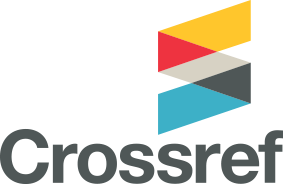Kajian Perkembangan Koperasi Simpan Pinjam Bina Swadaya Nusantara dan Usaha Mikro Perempuan Binaannya dengan Model ASA
Abstract
Abstract: Center for Micro Finance Development of Bina Swadaya has adopted ASA (Association for Social Advancement) model for servicing its women microcredit beneficiaries. After 12 year of services, there is a presumptions that ASA model has influence towards the development of saving and loan Cooperative Bina Swadaya Nusantara and also the development of its woman microbusiness clients. The aims of this study: 1) to analyze the performance of saving and loan Cooperative Bina Swadaya Nusantara in implementing ASA model, 2) to analyze the development of micro business conducting by women beneficiaries of saving and loan Cooperative Bina Swadaya Nusantara, 3) to analyze the impact of ASA
model micro credit service towards the development of microbusiness, and 4) to identify factors which influence the development of micro business using ASA model run by Saving and Loan Cooperative Bina Swadaya Nusantara. The methodology of this study used correlational descriptive explanative survey with qualitative and quantitative approaches. Sampling
technique used proportionate method by limitation of every region based on the quota, in accordance with a population that is in the region. This study used descriptive analysis and multiple linear regression. The result shows that there has been a significant effect on both saving and loan CooperativeBina Swadaya Nusantara and its women micro business.
The factors which have very significant and significant effects, are: micro business’s characteristic and micro business services knowledge. Whereas, the Credit Officer (CO) and the business environment have no significant effect.
Keywords
Full Text:
PDFReferences
Armendariz, B., and Murdoch, J. 2010. The Economic of Microfinance. The MIT Press Cambridge, Massachusetts London, England.
[ASA] Association for Social Advancement. 2014. Grants Free, Cost Efficient, Sustainable and Innovative Microfinance. http://www.asa.org.bd [15 Juli 2014]
Bulan, A. 2007. Analisis Hubungan Kinerja Pelayanan Lembaga Keuangan Mikro Non-Bank Terhadap Kepuasan Nasabah (Studi Kasus Lembaga Keuangan Mikro Bina Swadaya). Tugas Akhir [Tesis] Program Studi Magister Manajemen. Fakultas Program Pasca Sarjana Universitas Mercu Buana, Jakarta
Ismawan, B. 2012. Belantara Keuangan Mikro Indonesi: Membangun Indonesia Dari Desa Melalui Keuangan Mikro. Jakarta: Gema PKM Indonesia dan Penebar Swadaya.
Ismawan, B. 2013. Meningkatkan Keberdayaan Masyarakat Berkelanjutan. Depok: Yayasan Bina Swadaya.
Kementrian Negara dan UKM. 2012. Perkembangan Data Usaha Mikro, Kecil, Menengah (UMKM) dan Usaha Besar (UB) Tahun 2011-2012. http://www.depkop.go. id [15 Juli 2014]
Priyatno, D. 2009. Lima (5) Jam Belajar Olah Data Dengan SPSS 17. Yogyakarta: Penerbit Andi.
Retnadi, D., dan Hadinoto, S. 2007. Micro Credit Challenge. Cara Efektif Mengatasi Kemiskinan dan Pengangguran di Indonesia. Jakarta: PT Elex Media Komputindo.
Rema, N., and Hossain, M.A. 2002. Bina Swadaya Microfinance Service “Working Manual”. Prepared By ASA-Bina Swadaya. Bangladesh.
Saebani, A.B., dan Nurjaman, K. 2013. Manajemen Penelitian. Bandung: Penerbit CV Pustaka Setia.
Umar, H. 2008. Disain Penelitian Akuntansi Keperilakuan. Jakarta: PT Raja Grafindo Persada.
DOI: http://dx.doi.org/10.18202/jam23026332.14.2.06
Refbacks
- There are currently no refbacks.
 Index
Index









